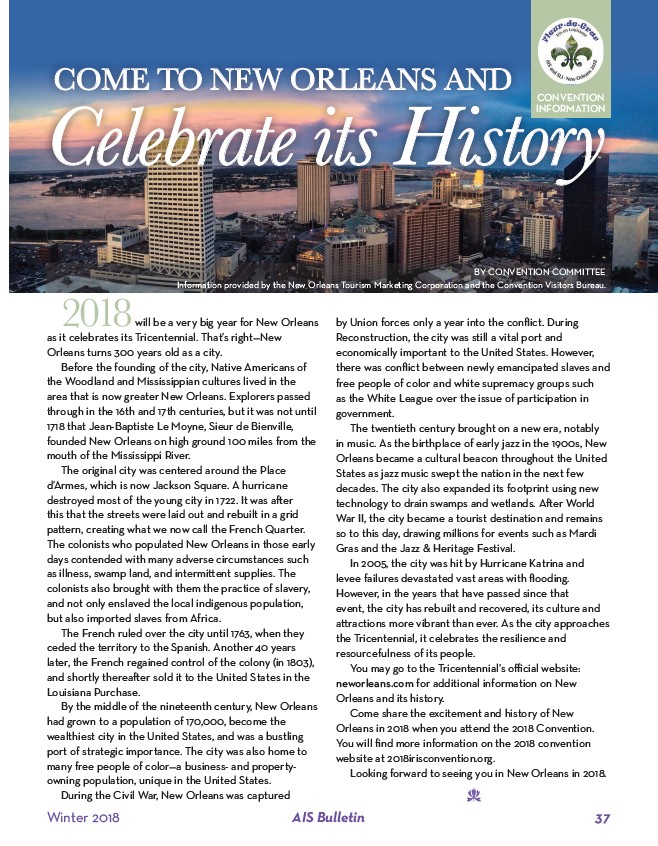
COME TO NEW ORLEANS AND
Celebrate its History
CONVENTION
INFORMATION
BY CONVENTION COMMITTEE
Information provided by the New Orleans Tourism Marketing Corporation and the Convention Visitors Bureau.
2018 will be a very big year for New Orleans
as it celebrates its Tricentennial. That’s right—New
Orleans turns 300 years old as a city.
Before the founding of the city, Native Americans of
the Woodland and Mississippian cultures lived in the
area that is now greater New Orleans. Explorers passed
through in the 16th and 17th centuries, but it was not until
1718 that Jean-Baptiste Le Moyne, Sieur de Bienville,
founded New Orleans on high ground 100 miles from the
mouth of the Mississippi River.
The original city was centered around the Place
d’Armes, which is now Jackson Square. A hurricane
destroyed most of the young city in 1722. It was after
this that the streets were laid out and rebuilt in a grid
pattern, creating what we now call the French Quarter.
The colonists who populated New Orleans in those early
days contended with many adverse circumstances such
as illness, swamp land, and intermittent supplies. The
colonists also brought with them the practice of slavery,
and not only enslaved the local indigenous population,
but also imported slaves from Africa.
The French ruled over the city until 1763, when they
ceded the territory to the Spanish. Another 40 years
later, the French regained control of the colony (in 1803),
and shortly thereafter sold it to the United States in the
Louisiana Purchase.
By the middle of the nineteenth century, New Orleans
had grown to a population of 170,000, become the
wealthiest city in the United States, and was a bustling
port of strategic importance. The city was also home to
many free people of color—a business- and propertyowning
population, unique in the United States.
During the Civil War, New Orleans was captured
by Union forces only a year into the conflict. During
Reconstruction, the city was still a vital port and
economically important to the United States. However,
there was conflict between newly emancipated slaves and
free people of color and white supremacy groups such
as the White League over the issue of participation in
government.
The twentieth century brought on a new era, notably
in music. As the birthplace of early jazz in the 1900s, New
Orleans became a cultural beacon throughout the United
States as jazz music swept the nation in the next few
decades. The city also expanded its footprint using new
technology to drain swamps and wetlands. After World
War II, the city became a tourist destination and remains
so to this day, drawing millions for events such as Mardi
Gras and the Jazz & Heritage Festival.
In 2005, the city was hit by Hurricane Katrina and
levee failures devastated vast areas with flooding.
However, in the years that have passed since that
event, the city has rebuilt and recovered, its culture and
attractions more vibrant than ever. As the city approaches
the Tricentennial, it celebrates the resilience and
resourcefulness of its people.
You may go to the Tricentennial’s official website:
neworleans.com for additional information on New
Orleans and its history.
Come share the excitement and history of New
Orleans in 2018 when you attend the 2018 Convention.
You will find more information on the 2018 convention
website at 2018irisconvention.org.
Looking forward to seeing you in New Orleans in 2018.
d
Winter 2018 AIS Bulletin 37